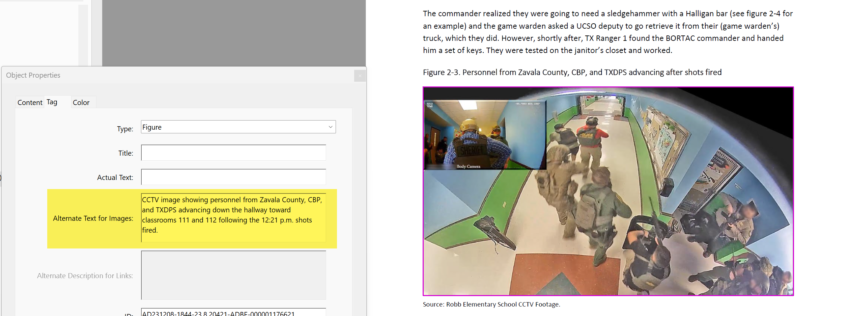The Court of Appeals in Ohio recently issued an opinion that nicely describes message exchanges that happened on Facebook Messenger—and the court did it without copying and pasting images. Instead, the opinion uses informational brackets as highlighted below from an excerpt. The risk of using uncaptioned images in opinions is that the images are often…
Category: Accessibility

Effective image captions and alternative text practices in the Robb Elementary School Active Shooter Critical Incident Review report
The legal writing community often does not recognize the need for or include captions or alternative text when pasting images in their complaints, motions, briefs, or court-authored opinions. Image understanding becomes inaccessible for some audiences. And unnumbered images can make for messy and confusing record cross-references. While many court rules fuss about font type and…
When judges add descriptive footnotes (and an itemized appendix) as they “write” about “inserted images,” they preserve the judicial-decision tapestry.
Why? Because many third-party-online publishers leave images out from the original decision. Imagine footnotes like these being dropped into a judicial decision: [Proposed new footnote:] To help future readers who may read this decision in a third-party, text-only format that left out the image, Figure 1 is a black-and-white portrait photograph of Prince taken in…
Print disabilities: visual examples
Millions in the United States have impaired vision because of uncorrected refractive error, and many suffer vision impairment even after correction. A great many people cannot read small font or “the fine print.” Fantastic (but worrisome) examples of how those with different visual-related print disabilities struggle with print text are included in this informative, one-hour…